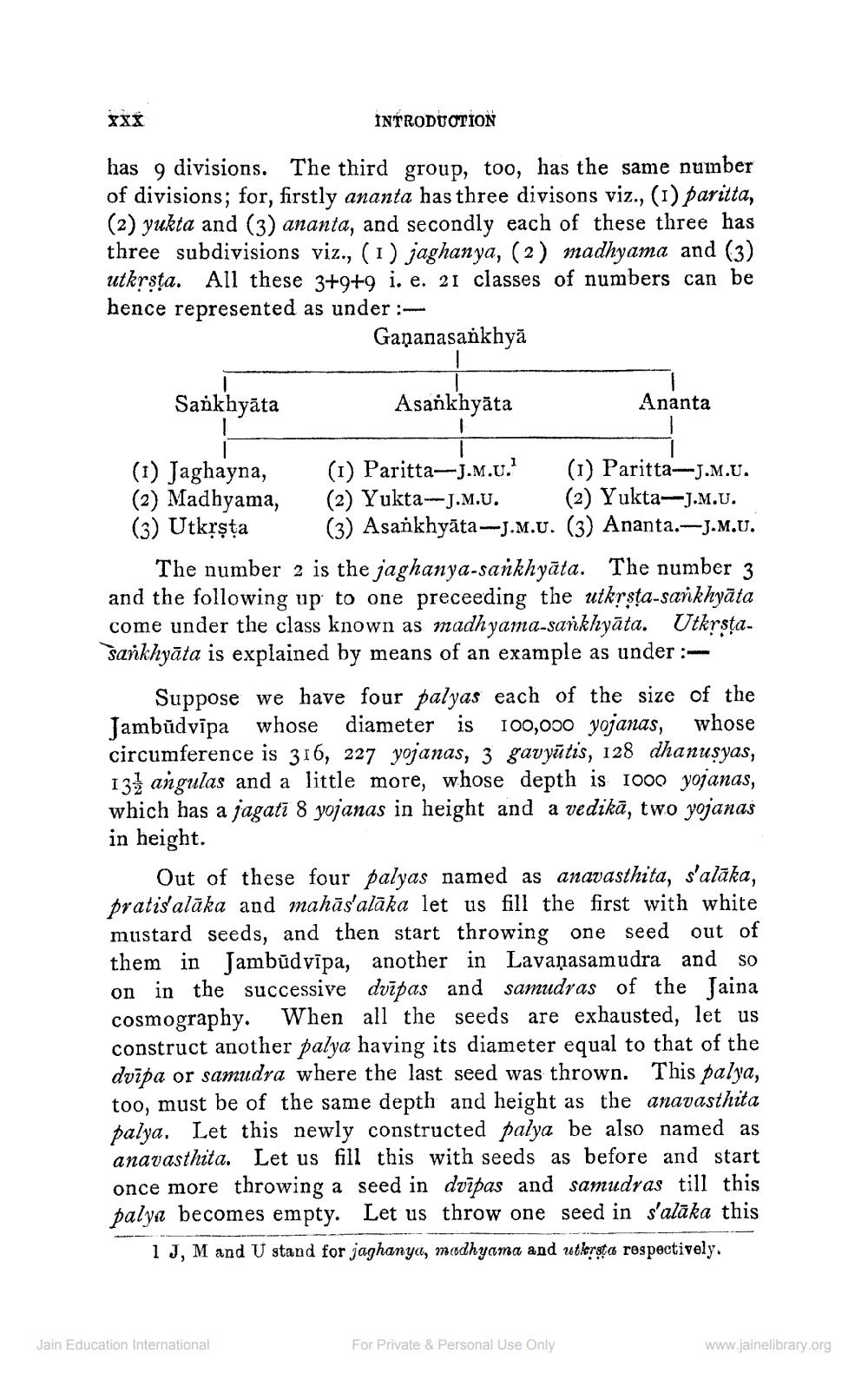________________
XXX
INTRODUCTION
has 9 divisions. The third group, too, has the same number of divisions; for, firstly ananta has three divisons viz., (1) paritta, (2) yukta and (3) ananta, and secondly each of these three has three subdivisions viz., (1) jaghanya, (2) madhyama and (3) utkrsta. All these 3+9+9 i. e. 21 classes of numbers can be hence represented as under :
Gananasankhyā
Sankhyāta
Asankhyāta
Ananta
(1) Jaghayna, (I) Paritta-j.m.u.' (1) Paritta-J.M.U. (2) Madhyama, (2) Yukta--J.M.U. (2) Yukta-J.M.U. (3) Utkrșța (3) Asankhyāta–J.m.u. (3) Ananta.-J.M.U.
The number 2 is the jaghanya-sankhyāta. The number 3 and the following up to one preceeding the utkrsta-sankhyāta come under the class known as madhyama-sankhyāta. Utkrstasankhyāta is explained by means of an example as under :
Suppose we have four palyas each of the size of the Jambūdvīpa whose diameter is 100,000 yojanas, whose circumference is 316, 227 yojanas, 3 gavyūtis, 128 dhanusyas, 131 angulas and a little more, whose depth is 1000 yojanas, which has a jagatī 8 yojanas in height and a vedikā, two yojanas in height.
Out of these four palyas named as anavasthita, s'alāka, pratis'alāka and mahās'alāka let us fill the first with white mustard seeds, and then start throwing one seed out of them in Jambūdvīpa, another in Lavaṇasamudra and SO on in the successive dvīpas and samudras of the Jaina cosmography. When all the seeds are exhausted, let us construct another palya having its diameter equal to that of the dvipa or samudra where the last seed was thrown. This palya, too, must be of the same depth and height as the anavasthita palya, Let this newly constructed palya be also named as anavasthita. Let us fill this with seeds as before and start once more throwing a seed in dvīpas and samudras till this palya becomes empty. Let us throw one seed in s'alāka this
1 JM and U stand for jaghanya, modhyama and utkrsta respectively.
Jain Education International
For Private & Personal Use Only
www.jainelibrary.org




